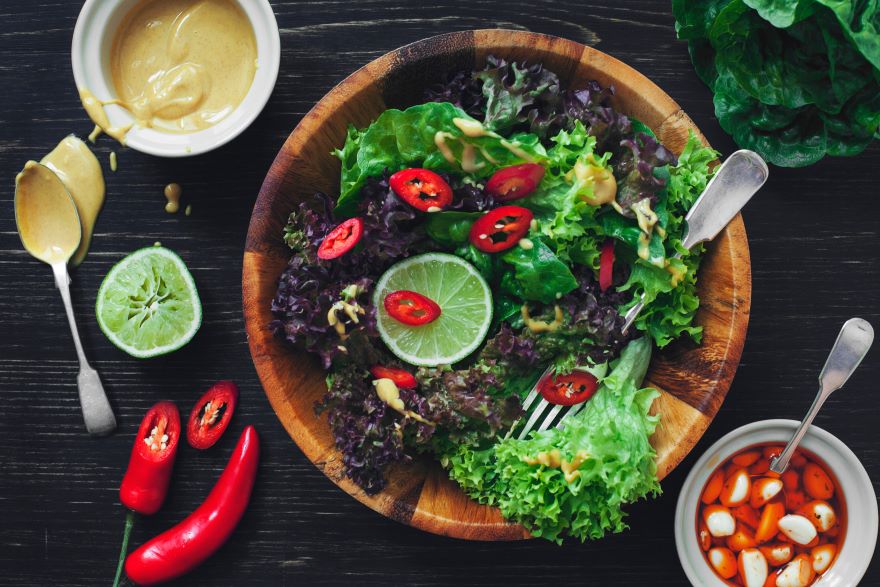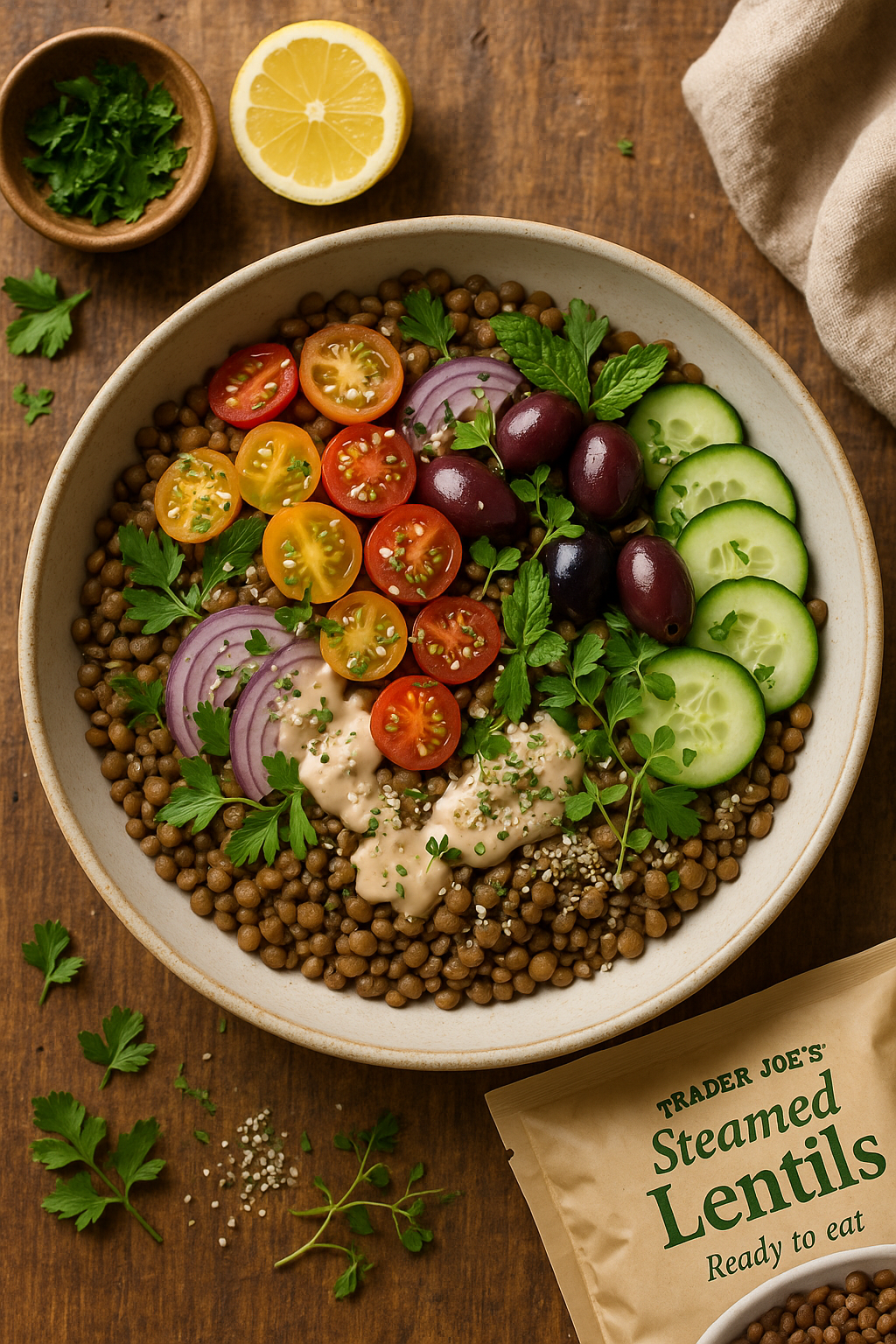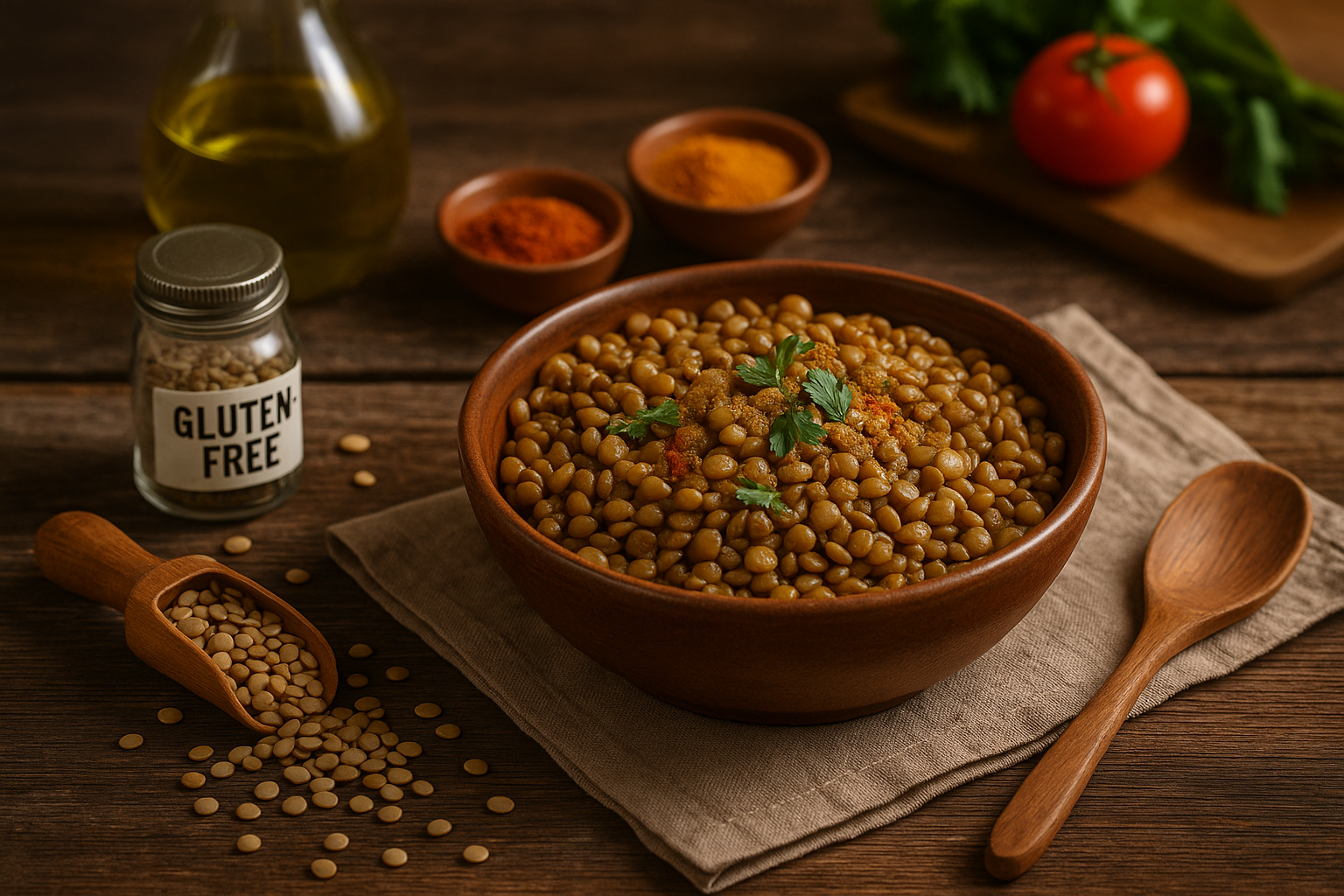Embracing plant-based eating is more than just a dietary preference; it’s a conscious choice that can transform one’s approach to health and wellness. Case studies and scientific research suggest that incorporating more plants into one’s diet can offer a range of benefits, from improved heart health to potential weight loss. I find it’s a way of eating that aligns with my values: it emphasizes whole, minimally processed foods, and encourages a rich intake of fruits, vegetables, grains, and legumes.

Moreover, plant-based meals aren’t just a bowl of greens anymore. Creativity in the kitchen has led to an explosion of flavorful, satisfying dishes that can appeal to meat-lovers and vegetarians alike. I’ve discovered that debunking myths about plant-based diets being boring or hard to follow is as simple as sharing a delicious meal made from plants. Not only does this lifestyle support individual health, but it also contributes to environmental sustainability, making it an ethical choice that impacts more than just our bodies.
Key Takeaways
- Plant-based diets can offer significant health benefits including heart health and weight management.
- Plant-based cuisine has evolved into diverse, flavorful meals that can be enjoyed by everyone.
- Adopting a plant-based diet can contribute positively to environmental sustainability.
Why Choose a Plant-Based Diet
Adopting a plant-based diet comes with a multitude of health benefits. Primarily, it supports weight loss and maintenance, as whole plants typically contain fewer calories and more fiber than processed foods. I find that when I focus on plants, I naturally consume fewer calories without feeling deprived. I also don’t have to worry about putting on weight as my weight stabilizes when I reach my ideal goal.
Concerning heart disease, a plant-based diet is often low in saturated fat, which can help maintain lower cholesterol levels. The foods that are staples in this diet — like fruits, vegetables, nuts, and legumes — are known for their role in managing and preventing heart conditions. Research has consistently shown that these foods can contribute to better heart health.
When it comes to managing blood sugar, a diet rich in whole plants can have a remarkable effect. The fiber in these foods can slow down the absorption of sugar, preventing spikes in glucose levels. This is particularly beneficial for individuals with diabetes or those at risk of developing it.
Additionally, plants possess natural anti-inflammatory properties. Thanks to these compounds, including a variety of fruits and vegetables in my diet aids with inflammation that is often linked with chronic diseases, including some types of cancer. Indeed, embracing a plant-focused diet can boost my immune system, making me more resilient against illness.
High blood pressure can also be positively influenced by plants. Their potassium-rich nature promotes the widening of blood vessels, easing the circulatory system’s workload, and therefore, lowering blood pressure.
Ultimately, for anyone considering a change towards a healthier lifestyle, a plant-based menu is compelling. By focusing on the consumption of whole and minimally processed foods, I am nurturing my body with what it needs to thrive. The synergetic effects of a plant-based diet on my health are backed by substantial evidence, reinforcing my confidence in this approach to nutrition.
Essential Plant-Based Nutrients
When I adopt a plant-based diet, I focus on incorporating a variety of vitamins, minerals, antioxidants, fiber, protein, and healthy fats to ensure a balanced intake. Key nutrients come from a diverse range of fruits, vegetables, nuts, seeds, grains, and legumes.
- Vitamins: Leafy greens like spinach and kale are rich in vitamins A, C, and K. Citrus fruits and berries offer a boost of vitamin C which can act as powerful antioxidants, helping to protect body cells.
- Minerals: A variety of minerals are crucial for my health, such as calcium, found in broccoli and almonds, and iron, which I can get from legumes and quinoa. Ensuring I consume enough magnesium is important, too, with pumpkin seeds being an excellent source.
- Protein: It’s a myth that plant-based diets are low in protein. In fact, lentils, chickpeas, and tofu provide ample protein that’s essential for muscle repair and growth.
- Fiber: To keep my digestive system running smoothly, I include whole grains and legumes in my meals for their high fiber content.
- Healthy fats: Avocados and nuts, such as walnuts and almonds, supply me with essential fatty acids. These are crucial for brain health and absorbing fat-soluble vitamins.
To ensure a comprehensive nutrient profile, I enjoy a range of colorful fruits and vegetables daily, which bring a spectrum of antioxidants to my plate. For optimal health benefits, I aim for whole and minimally processed plant foods whenever possible.
Creating Delicious Plant-Based Meals
When I approach plant-based cooking, my focus is on flavor and variety. I start with a foundation of herbs and spices to elevate the taste. For example, cumin and cilantro can add a warm, earthy flavor, while a pinch of sea salt and lemon juice can bring out the sour and sweet notes in a dish.
Here’s a simple way I like to structure my meals:
- Protein Sources: I incorporate beans, lentils, tofu, or tempeh, as they’re rich in protein and can easily absorb the flavors of my seasonings.
- Vegetables: A mix of colors from bell peppers to tomatoes ensures a wide range of nutrients. Plus, many vegetables have anti-inflammatory properties.
- Fats: A drizzle of high-quality oil, such as olive or avocado oil, adds richness and helps in absorbing fat-soluble vitamins.
Example Meal Components:
| Component | Options |
|---|---|
| Base | Quinoa, brown rice, whole-grain pasta |
| Protein | Chickpeas, black beans, tofu |
| Veggies | Kale, broccoli, carrots, bell peppers |
| Flavor Boost | Garlic, turmeric, ginger, basil |
| Fat | Nuts, seeds, avocados, olive oil |
I ensure every meal has a colorful representation from the variety of plants available. By doing this, not only do I create a visually appealing plate, but also a nutrient-dense one. Remember, the key to delightful plant-based meals is experimentation. So don’t shy away from trying new combinations or adding a twist to traditional recipes with unexpected ingredients.
Debunking Plant-Based Diet Myths
Many misconceptions surround plant-based diets, particularly regarding protein intake and health benefits. A common myth claims plant-based diets lack sufficient protein, but this is untrue. Plant-based diets can provide abundant protein through beans, legumes, nuts, and protein sources like tofu and tempeh. For example, lentils offer about 18 grams of protein per cup.
Another misconception is that plant-based diets are automatically healthy. This is not always the case, as the diet’s quality matters greatly. Consuming processed foods that are technically plant-based but high in added sugars and unhealthy fats can be detrimental. A focus on whole, unprocessed foods is crucial for a healthful plant-based diet, which has been associated with lower type 2 diabetes risk.
A third myth is that plant-based diets are more expensive due to the cost of fresh produce and specialty items. However, staples such as rice, beans, and seasonal vegetables can often cost less than animal products without sacrificing nutritional value.
It’s also erroneously believed that plant-based diets don’t provide enough calories for active individuals. While it’s true that vegetables are less calorie-dense, by including a variety of grains, nuts, and seeds, meeting your caloric needs is entirely feasible.
Lastly, there’s a myth that all plant-based diets are equal, which overlooks the concept of a healthful plant-based eating pattern. Such a pattern emphasizes the intake of whole foods and minimizes the consumption of processed items, which is pivotal for maintaining insulin sensitivity and promoting overall health.
By understanding the facts, one can see that a carefully planned plant-based diet can support optimal health and protein requirements, without breaking the bank or compromising on taste and satisfaction.
The Impact of Plant-Based Eating on Environment
Adopting a plant-based diet is widely recognized for its positive environmental effects. Major concerns about sustainability stem from the high demand and subsequent production of animal products. Livestock farming is resource-intensive, consuming vast quantities of water and land, and contributing significantly to greenhouse gas emissions.
Shifts towards plant-based eating practices are crucial in mitigating these environmental pressures. Plants require less water and land than animals to produce the same amount of food in terms of calories and proteins, illustrating a clear pathway for reducing our environmental footprint. It’s not just about becoming vegan; even small dietary changes towards more eco-friendly choices can have large impacts.
The movement towards eating more plants and fewer animal products is gaining momentum. This tide is driven not only by the desire to improve personal health but also to foster a healthier planet. Complex challenges such as deforestation and climate change are interconnected with our food systems.
By choosing more plant-based options, I actively participate in a collective effort to protect natural habitats and reduce pollution. Complementing this, research supports that current levels of meat consumption are simply unsustainable, and a global shift is necessary.
In essence, a diet rich in plants and lower in animal-based foods can lead to a more environmentally resilient food system. This approach champions a future where both people and the planet can thrive. Each plant-based meal thus becomes a vote for a more sustainable and responsible interaction with our world.
How to Transition to a Plant-Based Diet
Embarking on a plant-based diet journey can seem daunting at first, but with a few tips and strategic steps, the move can be smooth and sustainable. I’ve learned that one of the key methods is to start by slowly incorporating more fruits and vegetables into my daily meals.
I focus on filling half of my plate with vegetables at each meal — this ensures I get a variety of nutrients and stay full longer. Additionally, I include whole grains like brown rice and quinoa, which are great substitutes for refined grains. Beans, legumes, and nuts and seeds are excellent sources of protein and can effectively replace meat without compromising satiety.
For a gradual transition, I blend my eating habits by adding plant-based options to familiar dishes. For example, I might opt for a black bean burger instead of a beef patty or add chickpeas to my salad for a protein boost. This tactic allows me to adjust without feeling overwhelmed by a complete diet overhaul.
Furthermore, I plan my meals to ensure I’m incorporating a diverse range of plant-based foods. This approach helps me to maintain a balanced diet and keeps my eating habits interesting. Here’s a simplified meal planning idea:
| Breakfast | Lunch | Dinner |
|---|---|---|
| Oatmeal with berries and almond milk | Quinoa salad with mixed veggies | Lentil curry with brown rice and steamed broccoli |
I’m conscious of not just the diet itself, but the broader shift in my eating habits. Plant-based eating isn’t just about food; it’s about lifestyle choices that promote health and well-being. It’s important to me to stay informed and flexible, learning to make adjustments that fit my specific nutritional needs.
Frequently Asked Questions
In this section, I’ll address some common inquiries for those beginning their journey into plant-based eating, from recipes to resources that you can trust.
What are some popular plant-based recipes for beginners?
For those just starting, I recommend simple yet flavorful dishes like chickpea salad sandwiches or a classic vegetable stir-fry. These recipes are not only easy to follow but also pack a nutritious punch.
What books are recommended for learning about a plant-based diet?
Books like “How Not to Die” by Michael Greger and “The China Study” by T. Colin Campbell have been pivotal for many people. They offer in-depth insights into plant-based nutrition and its benefits for health.
How do people typically review the health benefits of plant-based eating?
People often report improvements in weight management, heart health, and blood sugar levels when switching to plant-based diets. Personal experiences and clinical studies provide a wealth of positive feedback on the health benefits of eating plants.
Can you suggest any must-have plant-based cookbooks?
Absolutely! “Oh She Glows” by Angela Liddon and “Isa Does It” by Isa Chandra Moskowitz are brilliant cookbooks that I find indispensable for delicious plant-based meals.
Where can I find downloadable plant-based recipe guides or PDFs?
Many websites offer free downloadable guides; sites such as Forks Over Knives have a variety of recipe PDFs available to help you get started right away.
What are some options for plant-based apparel?
Plant-based apparel options are abundant, ranging from organic cotton t-shirts to shoes made from recycled materials. Look for brands that specifically mention their use of sustainable and animal-free materials.

*We may earn a commission for purchases made using our links. Please see our disclosure to learn more.



